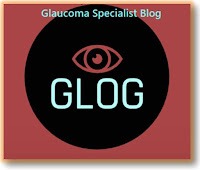ANIRIDIA
Guest author
HINA MERAJ
Ajmal Khan Tibbiya College
Aligarh-India
INTRODUCTION
Aniridia is a congenital, hereditary, bilateral, extreme form of iris hypoplasia or absence of iris.
It occurs as a result of abnormal neuroectodermal development secondary to a mutation in the PAX6 gene. This gene (PAX6) is adjacent to gene WT1, the mutation of which predisposes to Wilm's tumor.
TYPES
- ANIRIDIA TYPE 1 (AN-1)
AN-1 is inherited through the autosomal dominant inheritance pattern. It only affects the eye and spares rest of the body. Penetrance is complete (all patients with the genotype will have the phenotype). However, severity is variable.
- ANIRIDIA TYPE 2 (AN-2)
AN-2 is sporadic; which means it is not inherited from either of the parents.
Children with sporadic congenital aniridia may only have aniridia or they may also have a chance of having problems with other parts of their bodies.
Children with AN-2 are at risk of developing two associated conditions, namely Miller syndrome and WAGR syndrome.
- ANIRIDIA TYPE 3 (AN-3)
Can be associated with Gillespie Syndrome. AN-3 follows the autosomal recessive inheritance pattern. It is not caused by PAX6 mutations. Cerebellar ataxia and mental handicap are main features.
OCULAR FEATURES
Presentation is typically at birth with nystagmus, photophobia and strabismus (esotropia). The parents may have noticed the absence of iridis or apparently large pupil.
SIGNS
Aniridia is variable in severity, ranging from minimal, detectable only by retroillumination to total absence of iris.
There is often meibomian gland dysfunction apparent on the lids. Tear film instability, dry eye and epithelial defects are common. Lesions include corneal vascularization, epithelial ulcers, aniridic keratopathy and microcornea. Limbal stem cell deficiency may result in conjunctivalization of the peripheral cornea.
Lens changes can include cataract and subluxated or dislocated lens.
Possible abnormalities of the fundus include:
Foveal hypoplasia
Optic nerve hypoplasia
Macular hypopigmentation
Dull macular reflex
Glaucomatous cupping
Choroidal coloboma
MANAGEMENT
Painted contact lenses maybe used to create an artificial pupil and improve both vision and cosmesis. Simple tinted lenses are an alternative. Both may improve nystagmus.
Lubricants are frequently used for keratopathy.
GLAUCOMA
It accounts for 75% of cases; seen in late childhood or adolescence.
It is caused by synechial angle closure secondary to the contraction of rudimentary frill of iris.
Treatment
Medical treatment is usually inadequate in long term. Goniotomy maybe helpful if performed prior to the irreversible angle closure.
Glaucoma Drainage Devices maybe effective.
Diode laser cycloablation may be necessary if other modalities fail.







If you are seeking professional eye doctors from your can attain the most reliable treatment, then I suggest you visit Mitra Eye Hospital, the best eye hospital in phagwaraand attain the best treatment at a sustainable cost.
ReplyDelete